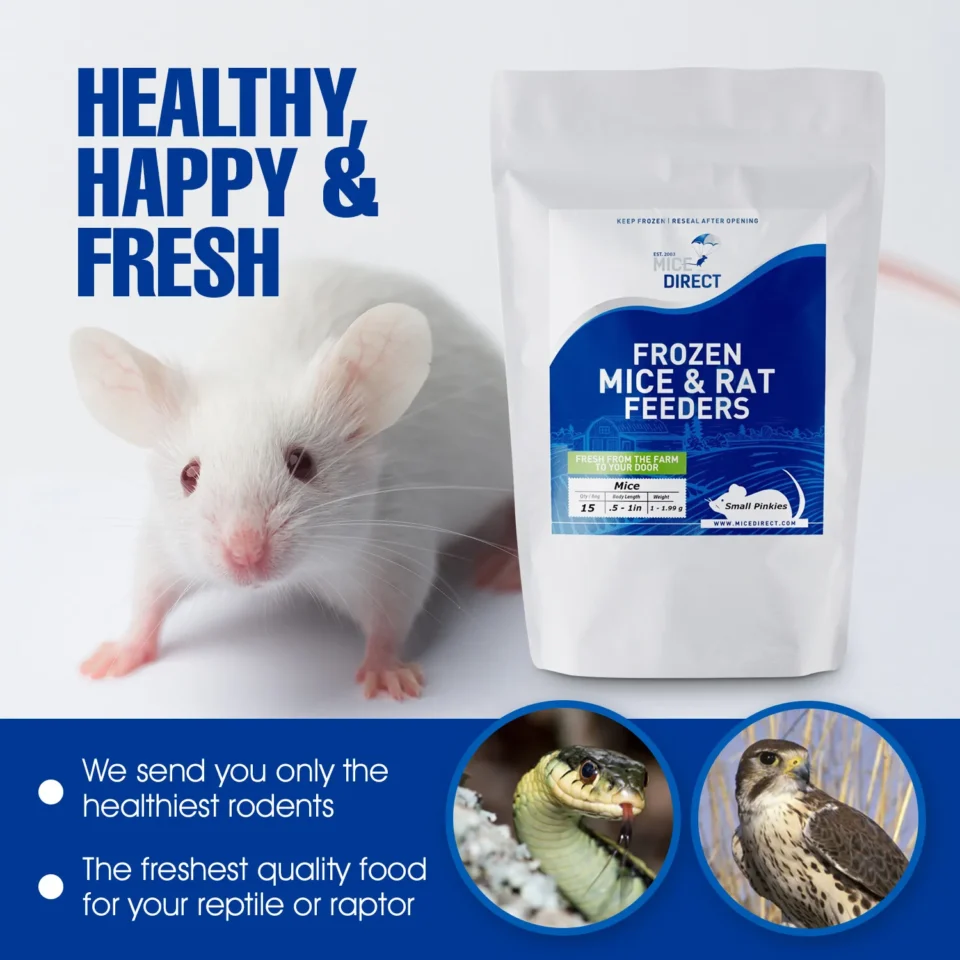If you’re a proud owner of a hognose snake, you’ve probably wondered at some point about the ideal size of frozen mice to feed your slithery pet. Feeding your snake the correct size of prey is crucial to its health, growth, and overall well-being. In this article, we’ll break down the key factors that will help you determine the right size of frozen mice for your hognose snake, ensuring your pet stays healthy and happy.
Why Choose Frozen Mice?
Before diving into size recommendations, it’s important to understand why frozen mice are a popular feeding option for pet snakes. Feeding pre-killed, frozen-thawed mice is more humane than live feeding, reduces the risk of injury to your snake (as live mice can bite and harm them), and is more convenient for pet owners. Frozen mice are easy to store and available in various sizes, making it easier to match the prey size to your snake’s needs.
Size Matters: Importance of the Right Prey Size
Feeding your hognose snake the right size of frozen mice is crucial for its digestion and health. If the prey is too large, it can cause digestion issues, regurgitation, or even lead to choking. On the other hand, if the mice are too small, your snake might not be getting the necessary nutrients it needs to thrive.
The general rule for feeding hognose snakes is to choose a prey item that is about the same width as the snake’s widest part, typically around the middle of its body. This ensures that the snake can swallow the prey easily and digest it without any problems.
How to Determine the Right Size of Frozen Mice
Here’s a step-by-step guide to help you select the right size of frozen mice for your hognose snake:
1. Measure the Snake’s Girth The best way to determine the appropriate prey size is by measuring your hognose snake’s girth (the thickest part of its body). You can use a tape measure or even just eyeball it if you have a good sense of size comparison. The prey should be roughly equal to or slightly smaller than this measurement.
2. Consider the Age and Growth Stage of Your Snake The size of the frozen mice you offer will also depend on the age and growth stage of your hognose snake. Here’s a rough guideline to help you match the size of the prey with the snake’s growth:
- Hatchlings (Newborn to 6 months): Pinky mice are typically the best choice for hatchlings, as they are small and easy to digest. Pinkies are newborn mice that haven’t yet developed fur, and they are perfect for small hognose snakes.
- Juveniles (6 months to 1 year): Once your hognose snake has grown a bit, you can transition to feeding larger prey, such as fuzzy mice. Fuzzies are slightly bigger than pinkies and have just started growing fur.
- Sub-adults and Adults (1 year and older): For sub-adult and adult hognose snakes, you can move on to larger frozen mice, such as hoppers or even small adult mice, depending on the size of your snake. Remember to continue monitoring your snake’s girth to ensure the prey is appropriately sized.
3. Monitor Your Snake’s Feeding Behavior Every snake is unique, and it’s important to pay attention to how your hognose reacts to feeding. If your snake is regurgitating its meals, it could be a sign that the prey is too large, and you may need to adjust the size accordingly. Conversely, if your snake seems hungry shortly after feeding, you may need to offer a larger mouse or increase the frequency of feedings.
Feeding Frequency and Schedule
In addition to selecting the right size of frozen mice, establishing a proper feeding schedule is important. Younger hognose snakes (hatchlings and juveniles) should be fed more frequently, about every 5-7 days. As your snake matures, you can reduce feedings to once every 7-10 days. Always observe your snake’s behavior and adjust the feeding schedule if necessary.
Preparing Frozen Mice for Feeding
When feeding frozen mice to your hognose snake, make sure to thaw them properly. Never feed a frozen mouse directly to your snake, as this can cause health issues. Here’s how to prepare the mice:
- Thaw the mouse: Place the frozen mouse in a plastic bag and immerse it in warm (not hot) water. Let it thaw until it reaches room temperature.
- Warm the mouse slightly: Once the mouse is thawed, you can warm it slightly by running warm water over it or placing it near a heat source. Snakes are more likely to eat prey that is warm and mimics the body temperature of a live animal.
Conclusion
Feeding your hognose snake the correct size of frozen mice is essential for its health and well-being. By measuring your snake’s girth, considering its age and growth stage, and monitoring its feeding behavior, you can ensure that your pet is getting the nutrition it needs. Remember, a well-fed hognose snake is a happy and healthy companion!

